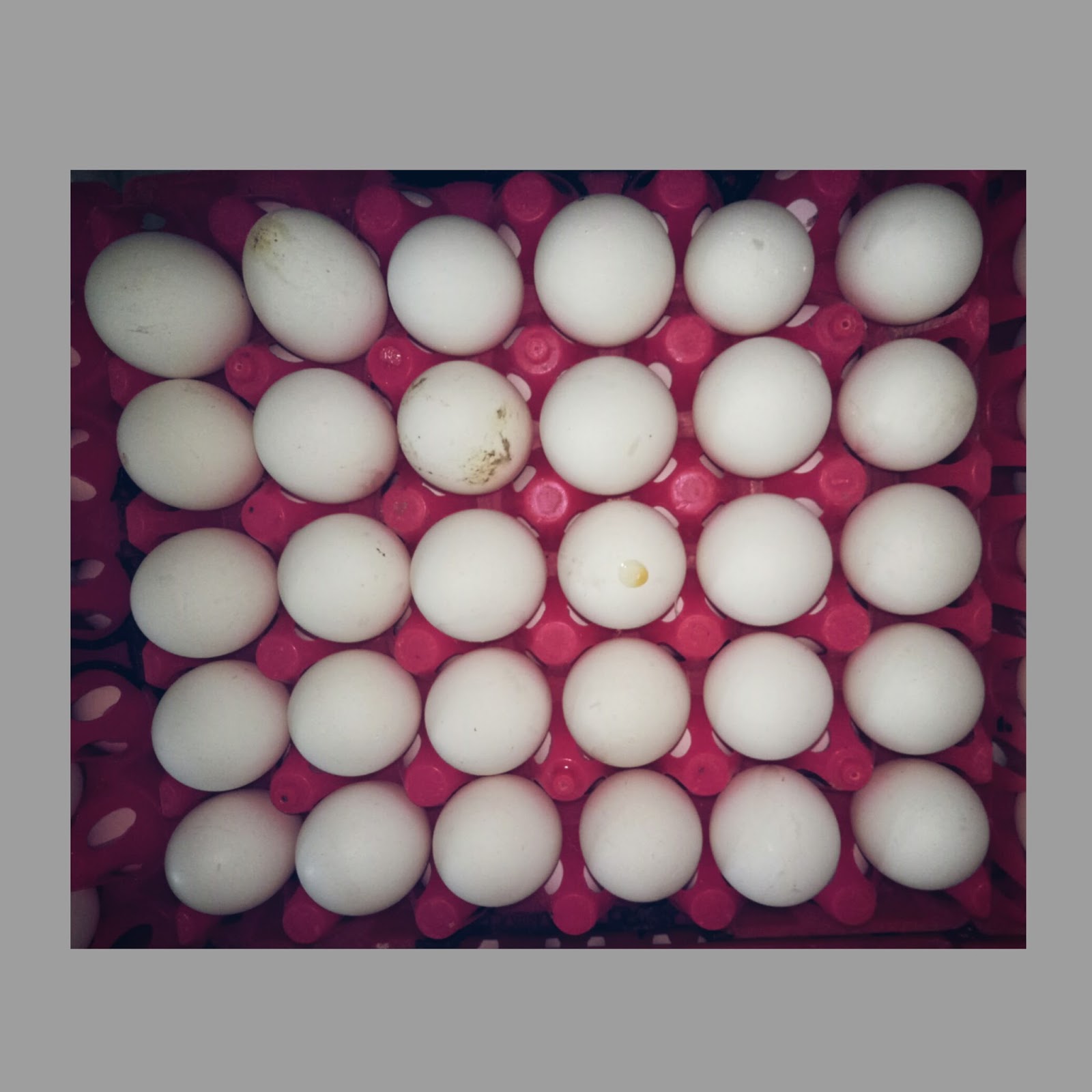E G G S ❤🙏
Description:
Hens' eggs are oval shaped and the shells range in colour from nearly white to rich brown. The shell contains the white (albumen) which surrounds the yolk (vitellus). In their natural state eggs contain the developing embryo of the creature. In the case of many of the eggs we buy, they are not fertile (contain no embryo chicken) because there are no cockerels kept with the hens. The size of the egg will depend upon the type, size and age of the chicken.
For example, bantam hens (a very small species) have much smaller eggs than that of the average chicken. The colour of the egg shell is indicated by the chicken's ear lobe. Generally, a red ear lobe indicates a brown shell (although a few species lay green/blue-shelled eggs) and a white ear lobe indicates that the chicken will lay white eggs.
Domestication and Farming:
Mankind has been eating eggs throughout its history, and the keeping of chickens for eggs and meat was part of very early farming thousands of years ago. Chickens were cheap to keep and feed and when they stopped laying, they made a good meal for the family. In the UK, chickens are a traditional part of a farmyard, and country way of life, where the children may well have been the ones to collect the eggs each day. Until the late 1950s, most eggs were from small farms. By the 1970s and 80s however nearly all commercial egg production was from battery farming of hens kept automatically fed and watered in small cages. The light and heat were controlled to keep the hens producing eggs throughout the year (they naturally do not lay much in winter). Huge hen houses were built the chickens had only just enough space to lay their eggs (in egg farms). In such farms, chickens lay up to 300 eggs per year. In recent years new legislation has been put in place to improve conditions. Many hens now live in barns that are still temperature and light controlled, and have automatic feed and watering, but the hens can move around. Commercially produced free-range eggs are from hens living in barns which have holes where the hens can get through to the outside during the day, where they can scratch in natural soil and feed from what they find as well as the feed provided. These areas need to be rotated to allow them to be cleaned and greenery to grow again, and fences have to be well maintained to keep predators out. All eggs are graded and date stamped before they are packed and sent to shops, markets and supermarkets.
Uses:
Eggs can be cooked and eaten in so many ways and at so many different types of meals that we can only mention a few. For breakfast or lunch they are often boiled, poached, scrambled, fried or made into omelettes, often as part of a meal containing other things. They are used in flans, both sweet and savoury, most cakes, sauces (basic to mayonnaise for instance), salads, curries, and baked dishes and puddings of many kinds. They are used to bind other ingredients and brush and coat food to give it a glossy finish when cooked. Egg whites are whipped to make meringues.
Health Value:
Eggs are a good source of protein, vitamins A, B2, B12 and D, and iodine as well as other minerals. They are very nutritious and are an important part of a balanced diet. People may worry about high cholesterol levels, but saturated fats are much higher in cholesterol than eggs and much less nutritious.
Types and Varieties:
Eggs are labelled and graded according to size and how the hens have been kept - barn eggs, free range eggs and organic eggs. The sizes vary from small through to medium, large and very large. The best egg laying hens include:
Leghorns: Prolific egg layers.
Rhode Island Red: A very popular chicken, bred for both













0 comments:
Post a Comment